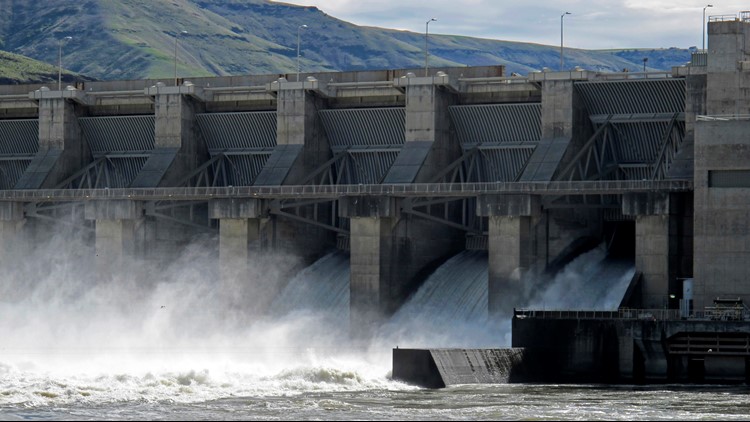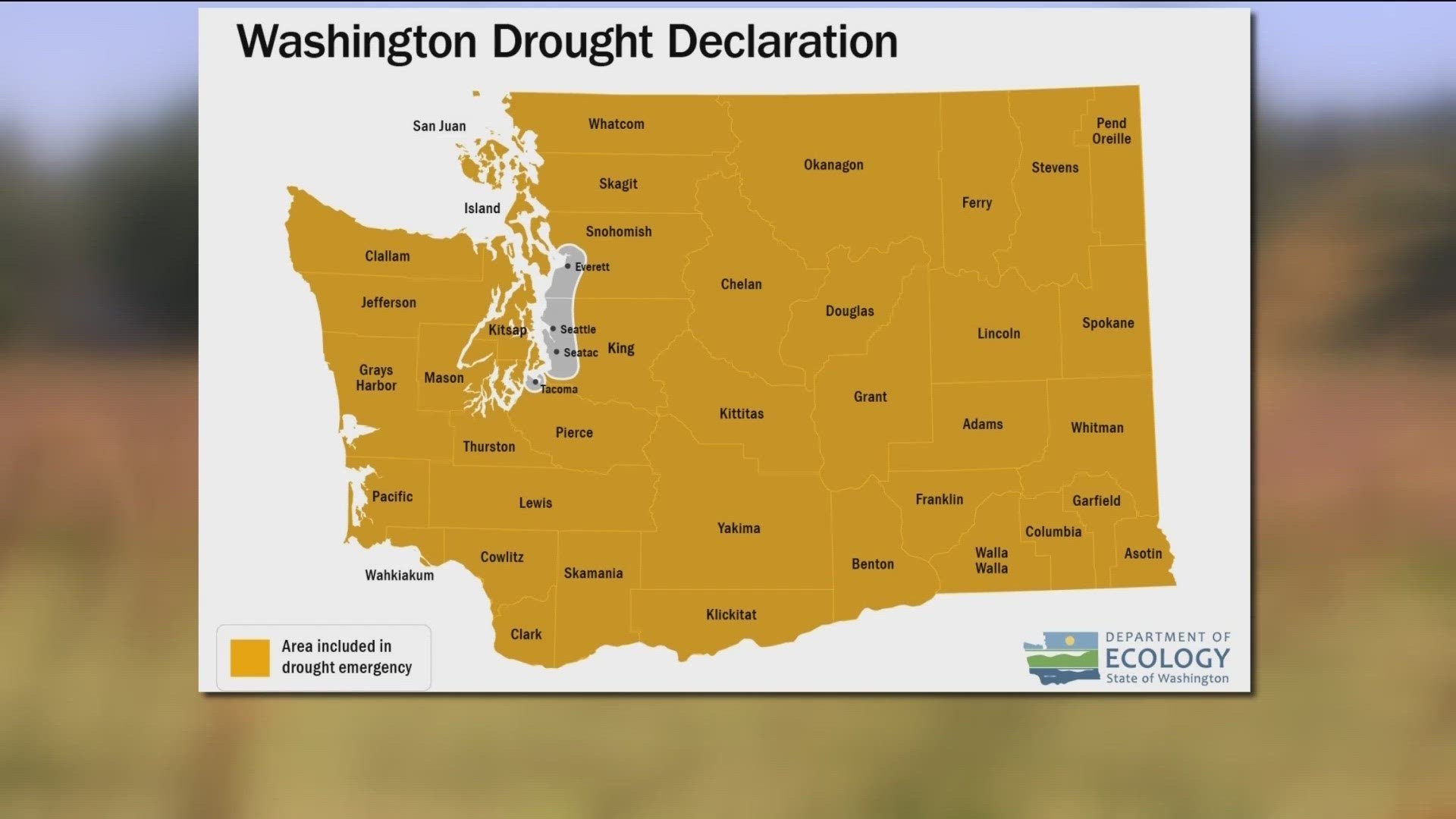SPOKANE, Wash. — Environmental groups are vowing to continue their fight to remove four dams on the Snake River in Washington state they say are killing salmon that are a key food source for endangered killer whales.
But instead of working with federal agencies, conservationists intend to seek removal of the dams through the political or legal systems.
Agencies of the U.S. government announced in late July that the four huge dams will not be removed to help salmon migrate to the ocean. That decision was finalized Tuesday in a so-called Record of Decision.
The decision thwarts the desires of environmental groups that fought for two decades to breach the dams.
"This is definitely not the end,'' said Robb Krehbiel of Defenders of Wildlife. "I don't see how this doesn't end up in court.''
But he is also encouraged by signs that governors of Northwest states, particularly Democrats in Oregon and Washington, are looking for a negotiated solution.
"To say we need a new approach, that we need leadership from our elected representatives, and that we need to find a solution that works for all of us is to state the obvious,'' said Todd True, an attorney for Earthjustice.
The ROD was issued by the U.S. Army Corps of Engineers, Bureau of Reclamation and Bonneville Power Administration, and sought to balance the needs of salmon and other interests.
The plan calls for spilling more water over the dams at strategic times to help endangered salmon migrate faster to and from the ocean, a tactic that has already been in use.
Dam critics have panned the Trump administration plan as inadequate to save salmon, an iconic Northwest species. They contend the dams must go if salmon are to survive.
"To us, the lower Snake River is a living being,'' said Shannon K. Wheeler, chair of Idaho's Nez Perce Tribe. "We are compelled to speak the truth on behalf of this life force and the impacts these concrete barriers on the lower Snake have on salmon, steelhead, and lamprey.''
The tribe will go to court, to Congress and to state capitols to find a way to restore the river, Wheeler said.
Scientists warn southern resident orcas are starving to death because of a dearth of chinook salmon that are their primary food source. The Pacific Northwest population of orcas — also called killer whales — was placed on the endangered species list in 2005.
The dams have many defenders, including Republican politicians from the region, barge operators and other river users, farmers and business leaders.
Republican members of Congress from the Northwest hailed the recent federal decision.
"Federal water infrastructure makes our way of life possible throughout the West,'' said U.S. Rep. Dan Newhouse, R-Wash., as part of a joint statement that included similar sentiments from Reps. Cathy McMorris Rodgers and Jaime Herrera Beutler of Washington, Rep. Russ Fulcher, R-Idaho, and Rep. Greg Walden, R-Ore.
The Pacific Northwest Waterways Association, made up of river users, also defended the dams.
"Salmon, orcas and other wildlife are threatened by climate change,'' said Executive Director Kristin Meira. "The clean power and efficient commerce provided by the system's hydroelectric dams and navigation locks are key to our region's ability to reduce our carbon footprint.''
The four hydroelectric dams were built from the 1960s to the 1970s between Pasco and Pomeroy, Washington. Since then, salmon populations have plunged.
The dams have fish ladders that allow some salmon and other species to migrate to the ocean and then back to spawning grounds. But the vast majority of the fish die during the journey, despite $17 billion spent so far on efforts to save them.
The 100-foot tall dams generate electricity, provide irrigation and flood control, and allow barges to operate all the way to Lewiston, Idaho, 400 miles from the Pacific Ocean.
The federal agencies concluded that removing the four dams would destabilize the power grid, increase overall greenhouse emissions and more than double the risk of regional power outages.
The four dams are part of a vast and complex hydroelectric power system operated by the federal government in Washington, Oregon, Idaho and Montana. The 14 federal dams on the Columbia and Snake rivers together produce 40% of the region's power — enough electricity for nearly 5 million homes.
But the dams have proven disastrous for salmon that hatch in freshwater streams, then make their way hundreds of miles to the ocean, where they spend years before finding their way back to mate, lay eggs and die.
The dams cut off more than half of salmon spawning and rearing habitat, and many wild salmon runs in the region have 2% or less of their historic populations, according to the Center for Biological Diversity.
On the way to the ocean, juvenile salmon can get chewed up in the dams' turbines.
In all, three federal judges have thrown out five plans for the system over the decades after finding they didn't do enough to protect salmon.
The most recent case occurred in 2016, when a federal judge in Portland, Ore., ordered dam managers to consider removing or altering the four dams. That order led to Tuesday's record of decision.
"The differences between the plan adopted by these agencies today and the plan the court rejected in 2016 are hard to discern,'' True said Tuesday. "And the plan the court rejected in 2016 was not materially different from plans the court had rejected in 2003, 2005, 2009 and 2011.''
The Save Our Wild Salmon coalition contended federal agencies cannot deliver a comprehensive solution. Rather, the effort must be led by stakeholders, tribes, politicians and citizens, the coalition said.



